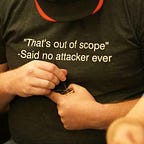Before hacking originally became popular, it was not seen as a severe crime. The hackers were dubbed “practical jokers” rather than “hackers.” The first hack occurred in 1878, when the phone business, Bell Telephone, was established. A gang of adolescent lads recruited to operate the switchboards would disconnect or misdirect calls.
The first genuine computer hackers appeared in the 1960s. Computers were mainframes back then, shut away in temperature-controlled, glassed-in facilities. Because running these devices was expensive, programmers had restricted access to them. The brighter pupils, who were mainly MIT students, were insatiably curious about how things worked. As a result, the most astute individuals devised “hacks,” or programming shortcuts, to help them finish computing chores more rapidly. In certain circumstances, the shortcuts outperformed the original application. One of the hacks developed in the 1960s, namely in 1969, was designed to serve as an open set of rules for running computers on the computer frontier.Everything was invented by two Bell Labs think tank workers. Dennis Ritchie and Ken Thompson were the two workers, and the “hack” was dubbed UNIX.
The world was prepped and ready for hackers in the 1970s. It was all about investigating and figuring out how the wired world functioned for hackers. This is the year that hacking transitioned from a joke to a serious enterprise.
The first significant hacking occurred in 1971, by a Vietnam veteran called John Draper. He discovered a means to make free phone calls. This became known as “Phreaking” later on. Abbie Hoffman’s “The Youth International Party Line” newsletter followed John Drapers’ lead. The only thing lacking from the hacking community was a gathering place. So, in 1978, Randy Seuss and Ward Christiansen of Chicago invented the first personal computer bulletin board system. Even now, this method is still in use.
Hacking reached its height of severity in the 1980s. By 1980, there were over one million devices in operation in the United States. By 1983, there had been almost ten million copies sold. There were about 30 million by 1986. As you can see, computer use skyrocketed during the 1980s.
IBM was responsible for the dramatic growth in computer use. IBM announced “personal computers” in 1981. It was a stand-alone machine, complete with a CPU, software, memory, utilities, storage, and so on. On these computers, you could travel anywhere and do anything. War Games, a film, was released in 1983. This was the first film to depict the inner workings of a hacker.
In Milwaukee, a gang of hackers known as 414 got into systems at places ranging from Los Alamos National Laboratory to Manhattan’s Memorial Sloan Kettering Cancer Center. The cops then shut them down. The big competition began between two organizations known as LOD and MOD. This conflict was dubbed “The Great Hacker War.” The Legion of Doom was created by a guy who went by the name Lex Luthor. It got its name from a Saturday morning cartoon. The Legion of Doomer had a reputation for drawing the finest of the best until one of its brightest members, Phiber Optik, got into a quarrel with Legion of Doomer, Erik Bloodaxe, and was booted out of the clubhouse.
The Legion of Doomer had a reputation for drawing the finest of the best until one of its brightest members, Phiber Optik, got into a quarrel with Legion of Doomer, Erik Bloodaxe, and was booted out of the clubhouse. He and a few of his buddies subsequently founded the Masters of Deception, a competing gang. LOD and MOD were embroiled in online combat for about two years beginning in 1990. They were jamming phone lines, listening in on calls, and breaking into one other’s personal computers. Things were so terrible that the Fed intervened to put a stop to it. Phiber and his pals were later imprisoned. This is what brought the period to a close.
